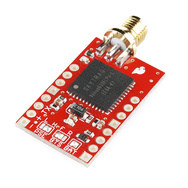The 1-second processing time is based on the fact that GPS technology uses CDMA to allow the receiver to pick up all satellite signals simultaneously.
For GPS to work, your receiver must perform several steps:
(Step 0) Locate which satellites are overhead (this can be assisted by something called an almanac). This step only happens when the unit is first powered on.
The signals from all visible satellites are received one the same frequencies simultaneously, and amplified.
The spread-spectrum digital signal is extracted by mixing the received signal with a local carrier (more info, PDF).
For each satellite (of at least 4), a pseudo-random code is generated to match the code of that given satellite.
The remote (sender) and local (receiver) codes are synchronized.
The incoming signal is decoded using the now-synchronized code.
The decoded signal contains a known pseudorandom sequence, which is matched against a local sequence to determine the distance from the satellite that transmitted the signal (this is based on the time offset between the sequences).
When all signals have been decoded, any clock inaccuracies are corrected and the position can be calculated.
Repeat.
Notice that each satellite's signal has its own code, which helps it stand out from all the other satellite signals. Simpler GPS units will process these decoding steps sequentially, while more sophisticated units use multiple receivers to process the signals in parallel.
You can further speed up the reporting rate of a GPS by combining the updates with an estimation based on odometry, an accelerometer, etc.
